On-chain data has become an indispensable "water and air" in the innovative activities of Web 3.0.
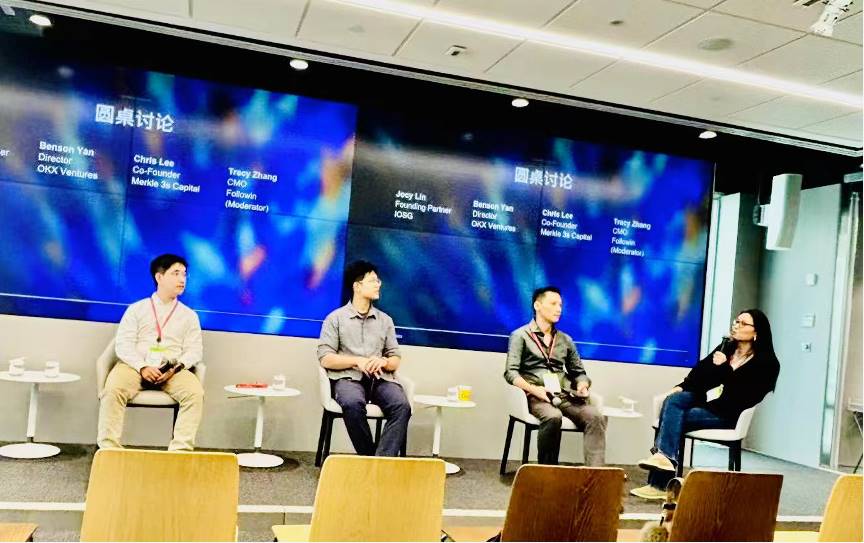
During the Token2049 event in Singapore, the OKLink Research Institute was invited to participate in the Corporate Alternative Asset Investment Summit 2024 hosted by Bloomberg, where several experts engaged in in-depth discussions about the future forms and prospects of data.
After the event, Lola Wang, head of the OKLink Research Institute, and senior researcher Jason Jiang published a signed article titled "How to Measure the True Value of On-Chain Data?" in the Hong Kong Economic Journal, providing an in-depth analysis of the open value and application potential of on-chain data in the Web 3.0 ecosystem.
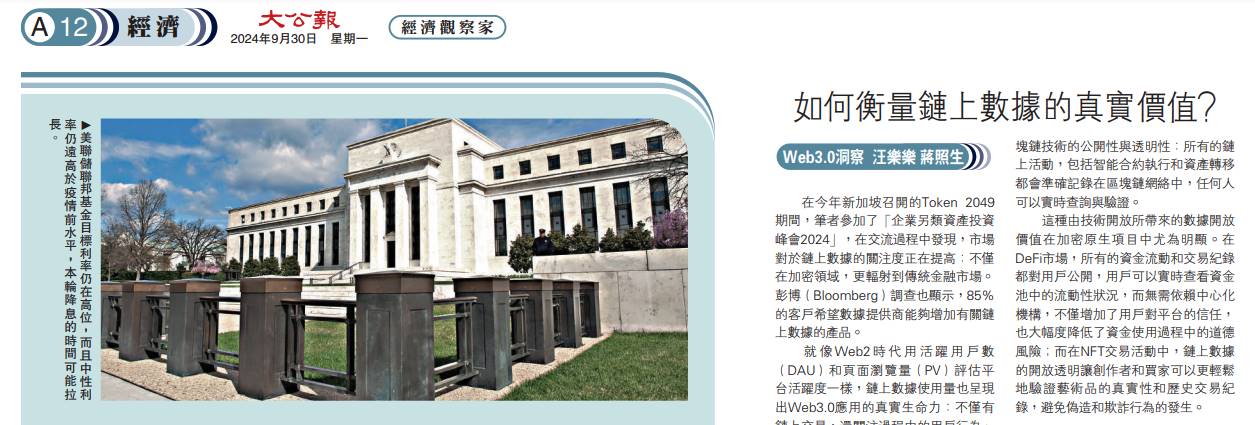
1. The usage of on-chain data is a key indicator for measuring Web 3.0 applications
Just as the active user count (DAU) and page views (PV) were used to assess platform activity in the Web 2.0 era, the usage of on-chain data also reflects the true vitality of Web 3.0 applications: it encompasses not only on-chain transactions but also user behavior during the process, smart contract execution, on-chain interactions, and voting, among other multidimensional data, demonstrating the comprehensive capabilities of Web 3.0 applications in user stickiness, interaction quality, and innovative expansion.
According to incomplete statistics from the OKLink Research Institute, there are currently over 1,000 public chains available in the market. Taking OKLink as an example, it has accumulated over 2000+ TB of on-chain data in just a few years, equivalent to 660,000 movies, 1 billion photos, and 2 billion e-books.
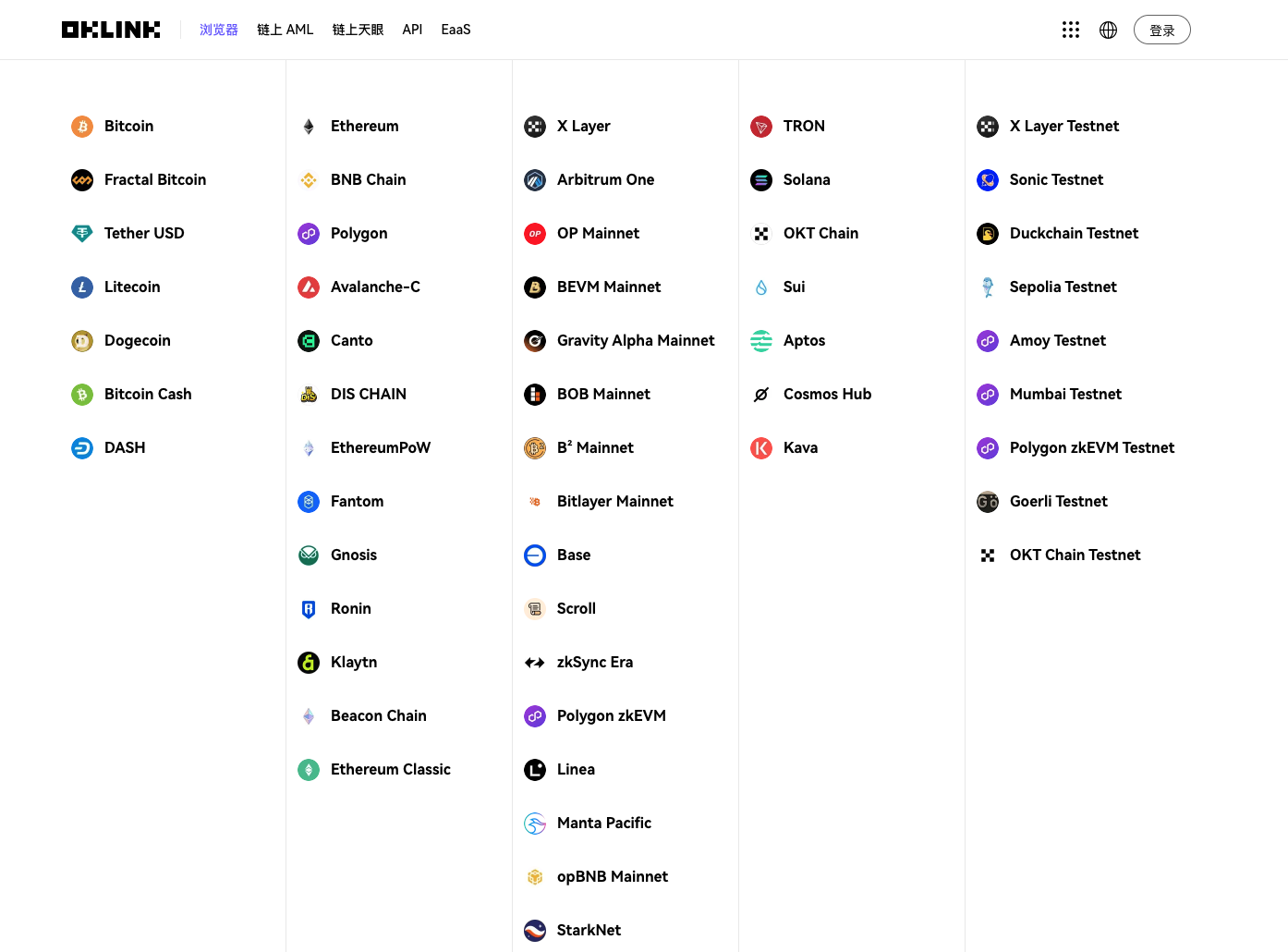
Image source: OKLink
In addition to public chains, other types of blockchain projects are also increasingly valuing the usage of on-chain data. For instance, AntChain initially focused on increasing on-chain transaction volume when exploring blockchain technology, but recently highlighted the increase in on-chain data usage when introducing its first RWA product: by 2023, the on-chain data reading volume of AntChain had reached an average of 100 million times per day. Therefore, whether it is a public chain, consortium chain, or private chain, although there are differences in technical architecture and development paths, the usage of on-chain data is an important indicator for measuring the activity and value of blockchain applications.
However, similar to other types of data, on-chain data can accurately reflect the actual usage of the corresponding blockchain but does not directly create value. Thus, it becomes increasingly important to refine and analyze the originally "visible but unusable" on-chain data and further provide better data productivity tools to stimulate stronger data co-creation capabilities. As a Hong Kong-listed company, OKLink (01499.hk) serves as a local on-chain data service provider, offering over 50 mainstream public blockchain explorers, data API services, and the latest EAAS (Explorer As A Service) services for technology developers based on its vast on-chain data reserves, continuously improving the efficiency of on-chain data usage and unlocking data value.
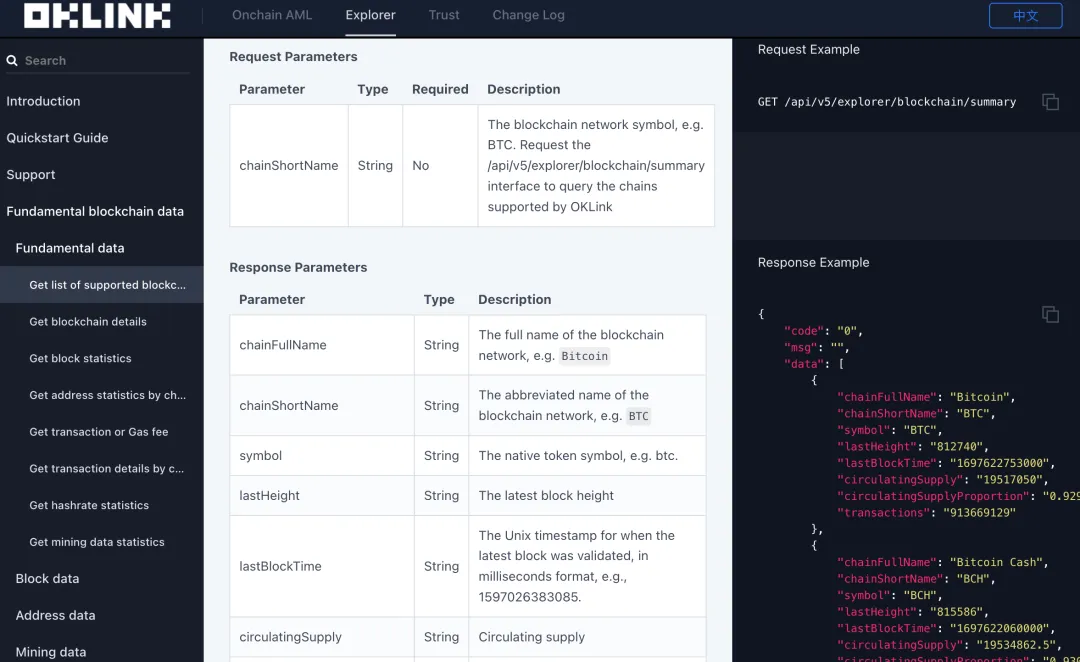
Image source: OKLink
From this perspective, whether serving the traditional financial market like Bloomberg or deeply engaged in the on-chain data sector like Web 3.0 technology companies, the exploration of data value is a common ground for both.
2. The open value of on-chain data far exceeds expectations
Of course, these are not enough to fully unleash the application potential of on-chain data.
As more and more social production and economic activities begin to migrate to the chain on a large scale, the scale and open value of on-chain data will further increase. Whether it is the Hong Kong government choosing to issue tokenized green bonds on a blockchain network or institutions like JPMorgan and DBS Bank using the Aave protocol to complete foreign exchange and bond transactions on the Ethereum network, the global traditional financial industry is continuously exploring the integration of blockchain with its existing business.
As Justin Chapman, Global Head of Digital Assets and Financial Markets at Northern Trust, previously stated,
"There are some compelling use cases that are likely to bring new asset classes and products to market, leveraging the power of tokenization, platforms, ecosystems, and new data sources to deliver benefits through the value chain, providing better management and actionable insights."
Behind these innovations based on blockchain technology flows a vast amount of on-chain data.
The openness of on-chain data essentially stems from the openness and transparency of blockchain technology: all on-chain activities, including smart contract execution and asset transfers, are accurately recorded on the blockchain network, and anyone can query and verify in real-time. This data open value brought about by technological openness is particularly evident in crypto-native projects. In the DeFi market, all fund flows and transaction records are publicly available to users, who can view the liquidity status in the fund pool in real-time without relying on centralized institutions, which not only increases user trust in the platform but also significantly reduces moral hazards during the use of funds; in NFT trading activities, the openness and transparency of on-chain data allow creators and buyers to more easily verify the authenticity and historical transaction records of artworks, preventing forgery and fraud.
More importantly, on-chain data is not only open but also public: anyone, organization, or institution can utilize on-chain data for analysis, research, and innovation. Developers can build decentralized applications (DApps) based on on-chain transaction data, researchers can analyze on-chain economic behavior based on user data, and commercial institutions can gain market insights through on-chain data. This public nature greatly enhances data utilization, making it not only valuable for individual users or companies but also promoting the prosperity of the entire Web 3.0 ecosystem.
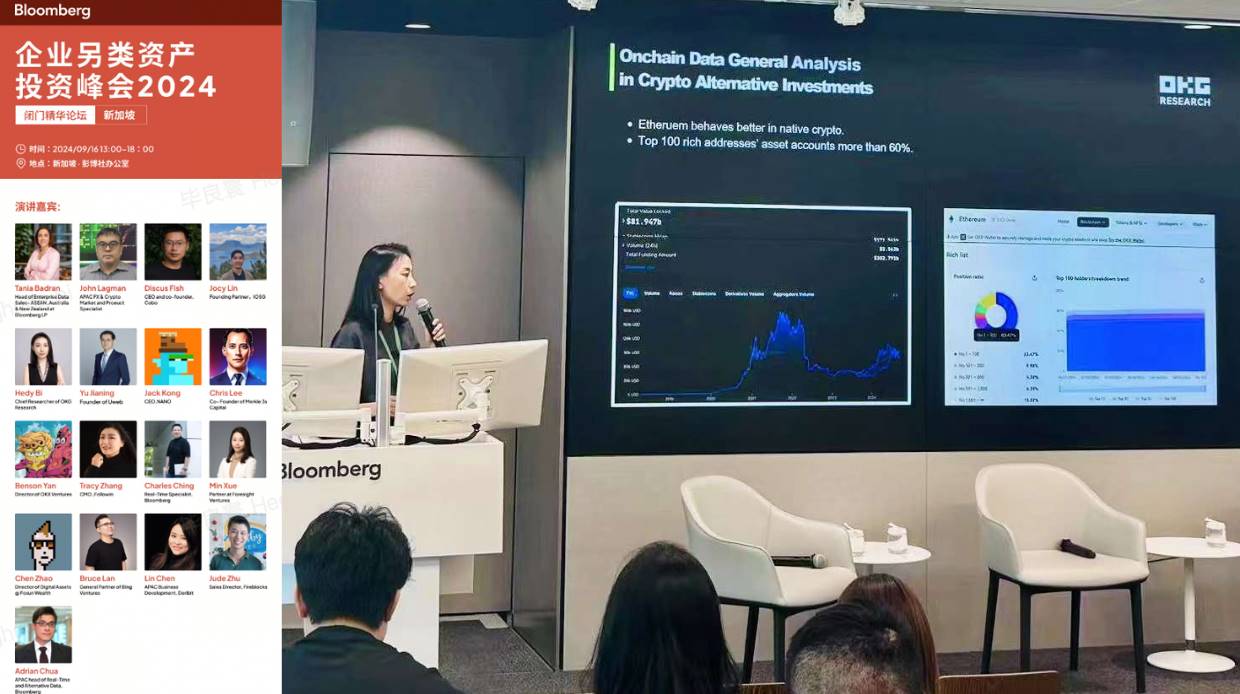
Image source: Bloomberg🇸🇬 Closed-door meeting site
OKLink Research Institute (OKG Research) demonstrated the application of on-chain data as a keynote speaker
However, openness and publicness can only ensure that on-chain data is theoretically trustworthy and usable, but how to utilize and employ it in practice to realize its inherent value requires more work. It is evident that equipping everyone with the comprehensive ability to capture, process, store, integrate, and analyze on-chain data is unrealistic and may lead to "reinventing the wheel," so more developers and technology companies need to do the preparatory work for data analysis and usage, making on-chain data more accessible and user-friendly. Just as generative AI allows everyone to potentially become a "content creator," better data analysis tools will also give everyone the opportunity to become a true "on-chain data analyst."
Today, the value of data is undergoing a silent yet far-reaching transformation. In the past, we often compared data to oil or treasure in the digital age, but now it is gradually becoming a necessity like water and air. Unlike oil or treasure, water and air are ubiquitous yet always open and inclusive. Compared to the closed nature of traditional data systems, on-chain data, with its openness and publicness, is redefining the usage, production, sharing, and value creation models of data elements, and is gradually becoming an indispensable "water and air" in the innovative activities of Web 3.0.
免责声明:本文章仅代表作者个人观点,不代表本平台的立场和观点。本文章仅供信息分享,不构成对任何人的任何投资建议。用户与作者之间的任何争议,与本平台无关。如网页中刊载的文章或图片涉及侵权,请提供相关的权利证明和身份证明发送邮件到support@aicoin.com,本平台相关工作人员将会进行核查。




